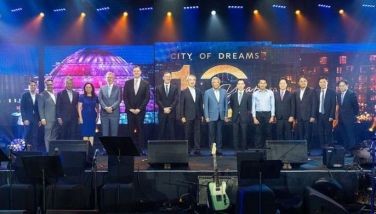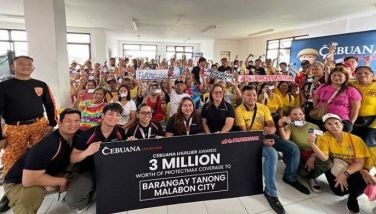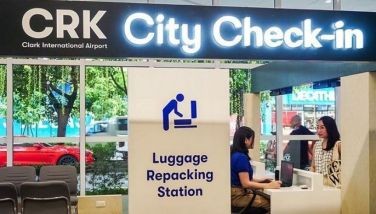Economic diplomacy
Following the instructions of President Marcos, our team at the Philippine embassy in Washington, DC is going full blast with our economic diplomacy efforts as we continue our engagements with US legislators and government officials. In fact, we discussed this extensively during our strategic planning session with Philippine consuls general all across the United States, including Guam, on how we will be moving forward relative to the incoming Trump administration.
We see a number of opportunities in exploring potential joint ventures in various sectors between US and Philippine investors. A very good example of a successful joint venture is Amber Kinetics, a global leader in the design and manufacture of long-duration flywheel energy storage systems.
I recently visited their facility in Union City, California and was given a briefing on the company’s cutting-edge technology that provides safe, sustainable and reliable energy storage solutions for the modern grid.
Former country chairman of Shell in the Philippines Edgar Chua is the CEO of Amber Kinetics. During a tour of the facility, I spoke with chief technology officer and co-founder Dr. Seth Sanders, who said they are expanding operations in the Philippines where their innovation hub is located. Their facility in Batangas manufactures, assembles and tests flywheels, while their demo site is located at the De La Salle University in Laguna.
Amber Kinetics is a modest company, but it has huge potential because of the role it plays in global efforts to transition towards a clean energy future. It also has a significant role in advancing the Philippines’ renewable energy sector because its investment and innovation in energy storage are transforming the country’s energy landscape, driving sustainability and supporting our transition to a greener future.
Armscor Global Defense is another company that has joint ventures in the United States, with facilities in Nevada, Montana and Utah. This is an example of a quid pro quo business engagement since it will be beneficial to both the US and the Philippines – which is how we are going to approach our economic diplomacy agenda with the Trump administration.
These are the kinds of economic activities that we want to see more of in the future, with joint ventures in various sectors that include semiconductors, digital, infrastructure and artificial intelligence.
Our main thrust is economic diplomacy that would help the country achieve economic prosperity that can translate to economic security. To this end, there have been a lot of positive developments like the P1.25-billion partnership between Ramon Ang’s New NAIA Infra Corp. (NNIC) and Manny Pangilinan’s Manila Electric Company (Meralco) to upgrade the power supply at the Ninoy Aquino International Airport (NAIA).
This collaboration will ensure a reliable supply of electricity at NAIA and will “directly improve functionality, safety and the passenger experience, setting the foundation for a world class airport that every Filipino can be proud of,” said NNIC president Ramon Ang.
I have known Ramon for a long time, whom I fondly call “Don Ramon” considering how he has transformed San Miguel into what it is today. Our good friend, the late SMC chairman Eduardo “Danding” Cojuangco, had great admiration for Ramon’s business acumen and his vision, and many would agree that without him, SMC would not be what it has become today – one of the biggest and most diversified conglomerates in the Philippines.
Enhancing power reliability at NAIA will help “empower the tourism and travel industry, support economic growth” and transform NAIA into a world-class facility, said Meralco chairman Manny Pangilinan.
I have said on several occasions that a stable and reliable supply of electricity is crucial in attracting investors to sustain growth and transform the economy, and the country’s biggest private electric distribution company can help bring economic progress to many parts of the country.
As pointed out by Meralco senior vice president Arnel Casanova during a financial forum with The Monday Circle to discuss the economic and business landscape, a primary objective is to “make the Philippines competitive in the global economy, particularly in the context of becoming digital.” In terms of food security, for instance, power is needed for cold storage. In the area of health care, power is crucial for hospitals to operate very well, for quality of life to be better and for businesses to thrive.
The Philippines is really in a good place today, judging from the positive economic outlooks from international financial institutions like the World Bank that projects the economy growing at an average of six percent over the period from 2024 to 2026.
According to World Bank country director for the Philippines Zafer Mustafaoglu, “strong growth puts the country on a firmer footing to maintain gains in poverty reduction,” but warned about the country’s vulnerability to extreme weather events like typhoons.
Knowing the economic impact of natural disasters, President Marcos has called on the National Disaster Risk Reduction and Management Council, other concerned agencies and local government units to “develop innovative solutions” that are science-based, sustainable and future ready.
The Luzon Economic Corridor (LEC), which is a partnership between the Philippines, Japan and the United States to develop infrastructure projects such as railways, port modernization and upgrades, semiconductor supply chains and others aimed at driving economic growth, is also attracting interest from countries like Australia, South Korea, Sweden and the United Kingdom to participate in development projects under the LEC.
We have positive vibes and confidence that under the Trump administration, the economic relationship between the Philippines and the United States would be even better, since our focus on investments down the line is a two-way street – beneficial to both countries in the long run.
* * *
Email: [email protected]
- Latest





















